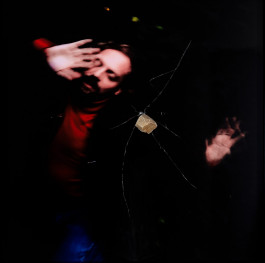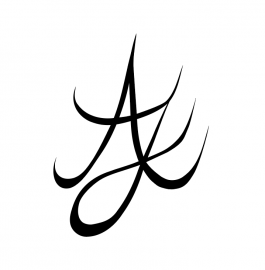

Dorian Sari

09.09. – 21.10.23
Dorian Sari born in 1989, in Izmir, Turkey. Studied Political Science and Languages, Greek literature at Paris Sorbonne University, Visual Art at HEAD Geneva, and Visual Art Institut Kunst Basel. They live and work in Basel and Geneva, Switzerland.
Dorian Sari is an observer of public reactions to contemporary politics and social movements. The main core of their work is looking into human beings, cultures and projecting them with personal and collective mythology into completely fictional, theatrical scenes, based on anthropological and psychoanalytical interpretation of humans and their symbols. They create a certain perspective for a certain period in their narrations. Mostly in the form of sculpture, video, and performance. Their goal is requestioning cultural norms and hierarchies.
Sari’s work has recently been presented at; Musée d’Art Modern du Grand Duc Jean de Luxembourg, Luxembourg (2023); Kunsthalle Geneva, Switzerland (2022); Kunstmuseum Basel, Switzerland (2021); Gallery Öktem & Aykut, Turkey (2021). In 2021 they received the Manor Kunstpreis and in 2019 the Swiss Art Awards Switzerland.






We hide in order to be seeked. It is a desire as ancient as the fresco found in the volcano-buried city of Herculaneum showing three cupids at play, what was then called ‘apodidraskinda’. Children take a particular pleasure in hiding, not because they will be found in the end, but by the very act of hiding—of being concealed in a laundry basket or a cabinet, of curling up in the corner of a garden—to the point of almost disappearing. How smooth we go in hiding may become a dominant strategy for survival and self-protection in contemporary life, to hide the fragilities and vulnerabilities that make us humans who we are. Sometimes it is in that hiding that some of the most precious pieces of literature and poetry appear. How clever we get in seeking may signify a potential lust and curiosity for life, always looking for something and not afraid of being seen. Dorian Sari is ever curious about the mysterious relationalities we play as humans to make ourselves and a society that come together in relation. What kinds of roles, positions, and stigmas do we choose to become? What do we actually say in between what we don’t say? Sari focuses on objects, scenes, moments, and words that may go unnoticed in what they trigger in the fast pace of today’s life. They are interested in the emotions that shape the very surfaces of bodies, following Sara Ahmed’s Spinoza-inspired thinking when she notes how attending to emotions shows us how all actions are reactions, in the sense that what we do is shaped by the contact we have with others. They seek to debunk, in the end, the Western myth of individuality, the kind of identity politics it produces, and the symbolic capital it plays with in order to feed itself. The photography installation series ‘The Itch is Back’ (2022–ongoing), present in the heart of ‘Hide and Seek’ with some freshly produced editions, is a good example of how the artist plays with the performative as an exercise of versatility in the visual economy of reproducing the self. They are their various ‘victim’ selves in these images. Yet they are also the ones that hit and crack the glass in front of them, hinting at how, as ‘homo ludens’, the playing human, we create the cyclical games with ourselves in the first place. In this parody, Sari portrays us as our own aggressors and victims before anyone else. ... continue reading

Dorian Sari
Dorian Sari born in 1989, in Izmir, Turkey. Studied Political Science and Languages, Greek literature at Paris Sorbonne University, Visual Art at HEAD Geneva, and Visual Art Institut Kunst Basel. They live and work in Basel and Geneva, Switzerland.
Dorian Sari is an observer of public reactions to contemporary politics and social movements. The main core of their work is looking into human beings, cultures and projecting them with personal and collective mythology into completely fictional, theatrical scenes, based on anthropological and psychoanalytical interpretation of humans and their symbols. They create a certain perspective for a certain period in their narrations. Mostly in the form of sculpture, video, and performance. Their goal is requestioning cultural norms and hierarchies.
Sari’s work has recently been presented at; Musée d’Art Modern du Grand Duc Jean de Luxembourg, Luxembourg (2023); Kunsthalle Geneva, Switzerland (2022); Kunstmuseum Basel, Switzerland (2021); Gallery Öktem & Aykut, Turkey (2021). In 2021 they received the Manor Kunstpreis and in 2019 the Swiss Art Awards Switzerland.






We hide in order to be seeked. It is a desire as ancient as the fresco found in the volcano-buried city of Herculaneum showing three cupids at play, what was then called ‘apodidraskinda’. Children take a particular pleasure in hiding, not because they will be found in the end, but by the very act of hiding—of being concealed in a laundry basket or a cabinet, of curling up in the corner of a garden—to the point of almost disappearing. How smooth we go in hiding may become a dominant strategy for survival and self-protection in contemporary life, to hide the fragilities and vulnerabilities that make us humans who we are. Sometimes it is in that hiding that some of the most precious pieces of literature and poetry appear. How clever we get in seeking may signify a potential lust and curiosity for life, always looking for something and not afraid of being seen. Dorian Sari is ever curious about the mysterious relationalities we play as humans to make ourselves and a society that come together in relation. What kinds of roles, positions, and stigmas do we choose to become? What do we actually say in between what we don’t say? Sari focuses on objects, scenes, moments, and words that may go unnoticed in what they trigger in the fast pace of today’s life. They are interested in the emotions that shape the very surfaces of bodies, following Sara Ahmed’s Spinoza-inspired thinking when she notes how attending to emotions shows us how all actions are reactions, in the sense that what we do is shaped by the contact we have with others. They seek to debunk, in the end, the Western myth of individuality, the kind of identity politics it produces, and the symbolic capital it plays with in order to feed itself. The photography installation series ‘The Itch is Back’ (2022–ongoing), present in the heart of ‘Hide and Seek’ with some freshly produced editions, is a good example of how the artist plays with the performative as an exercise of versatility in the visual economy of reproducing the self. They are their various ‘victim’ selves in these images. Yet they are also the ones that hit and crack the glass in front of them, hinting at how, as ‘homo ludens’, the playing human, we create the cyclical games with ourselves in the first place. In this parody, Sari portrays us as our own aggressors and victims before anyone else. ... continue reading


Anton Janizewski Galerie,
Anton Janizewski Galerie,